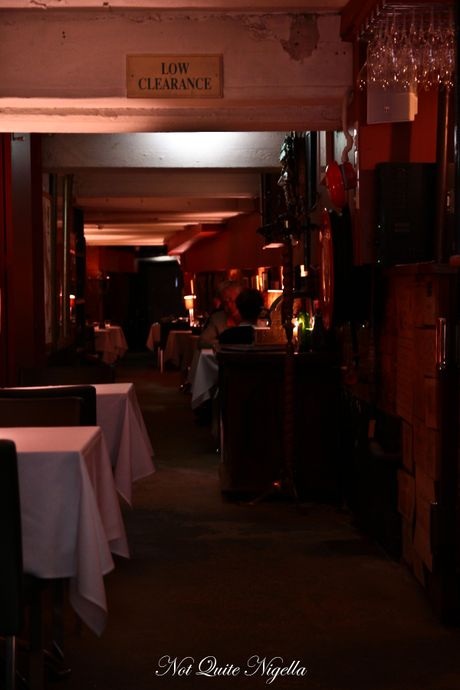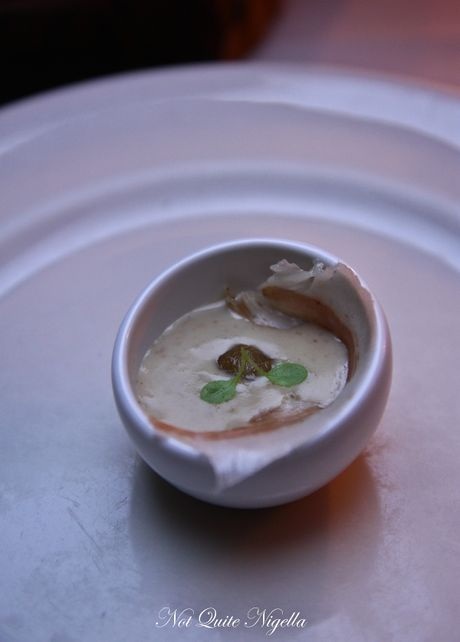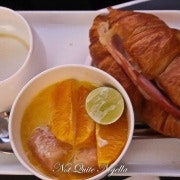Fine dining by the bottles
Australia's favourite food blogger, Not Quite Nigella, aka Lorraine Elliott, heads to Mildura in rural Victoria and discovers a New World when she dines underground.
I once worked with a man who was distinctly odd and very prickly. Paranoid, obsessive and angry are the first three words I'd use to describe him. I called him Voldemort because he was a little bit crazy. He actually loved being called Voldemort. One day we were invited to lunch by one of our suppliers and the restaurant was in a cellar. While he was terrified of it, the rest of us loved the intimate, unique atmosphere. I decided that was the thing that made him craziest.
So when I heard that Stefano's flagship restaurant was housed in a cellar, I knew it would be atmospheric and romantic (hmmm, perhaps it was Voldemort's fear of the romantic or intimate). Celebrity chef Stefano de Pieri has handed over the reins to Jim McDougall, a Mildura-born chef who has worked with Shannon Bennett at Vue de Monde and has returned to his roots in Mildura. Jim's food is very different from Stefano's rustic Italian cuisine, and the cookbook Nuovo Mondo (New World) demonstrates this with Stefano's recipes on one page and Jim's modern interpretations on another. For dinner, there is a choice of a six or eight-course dining menu, the latter being the signature experience. Each can be matched to wines.

The cellar is moodily lit with exposed brick walls and plenty of tables for two. It came about as a combined vision of Stefano and his father-in-law Don Carrazza, who owns the Grand Hotel. Until 1988, the liquor licensing laws started by the Chaffey brothers for Mildura meant that the only place that could serve or sell alcohol was the Grand Hotel. As a result, they needed a huge storage area for the bottles and they used the cellars for this along with the theatre next door. Stefano points out an absence of pubs and clubs in Mildura because of this rule.
Patrons can also ask to see the red and white wine cellars housed in labyrinthine glory past the bottle-capping machine and Stefano's favourite art works. Stefano is dining in the restaurant alongside some guests that accompanied him on a tour of Italy. He comes in and out between courses to talk to us.
The most sought-after table in the restaurant is the "kitchen table", which can seat up to four people directly near the open kitchen. It affords diners the chance to overhear any chef-speak. The chefs also bring out some of the courses themselves. We overhear people saying things, like: "Delicate! No sausage fingers!" from chef Jim and a "Oui, chef!" in response.
We start with bread, a choice of three types (a rye made with malt from their brewery, a grain sourdough and a white sourdough), which are served crusty and warm with a homemade whipped butter flavoured with saltbush leaves or an olive oil. The saltbush gives it an umami quality, much like Vegemite or miso paste.
The first tastes come out from the kitchen and the amuse-bouche is a fetching set of three. The eight courses don't take into account the many extra courses and these whet our appetites nicely. We start with the white almond gazpacho, grape and cured guanciale (pig's cheek).The gazpacho is creamy and luscious and balanced against the fatty, paper-thin guanciale.

Jim brings out the next dish and he tells us the figs come from farmer Gino Garreffa from a single fig tree that exclusively supplies the restaurant. Gino is able to pick the figs when they are of perfect ripeness. The consistency of these figs is so luscious and jam-like that they look like they have been glazed, but they have only been sliced. The figs sit on a layer of whipped soy cream peeking out from a layer of paper-thin duck ham. The ducks are from Pavinga near Loxton in South Australia, and the duck is brined and poached rather than dry-cured. To the right is a snowy sprinkle of olive oil and maltodextrin dust combined and it is seasoned with Murray River salt and decorated with pea tendrils. But the fig is the star: its lusciously jellied centre is sweet and brings together all of the elements.
Click here to read the full post.













